Creating a safe work environment is paramount in the construction industry; one critical element of maintaining safety is navigating an OSHA inspection effectively. With the potential for hefty fines, work stoppages, and damage to your reputation, understanding how to prepare and handle an OSHA inspection can be the difference between a minor interruption and a major setback. This guide from South Coast Improvement Company will take you through expert strategies to ensure your construction site is prepared to handle an OSHA inspection with confidence and competence.
Why OSHA Compliance is Crucial in Construction
The Occupational Safety and Health Administration (OSHA) was established to enforce safety and health legislation, ensuring workers have a secure environment. In the construction industry, OSHA compliance isn’t just about avoiding penalties – it’s about protecting lives.
Highly regulated due to its hazardous nature, the construction sector frequently faces inspections that aim to enforce strict adherence to safety standards. Thus, comprehensive compliance can foster an environment where workers feel secure and employers are shielded from the potentially catastrophic consequences of violations.
Understanding OSHA’s Inspection Prioritization Hierarchy
OSHA’s agenda is structured to target and prioritize the inspection of workplaces that present the greatest level of risk, aiming to foster safer work environments across approximately 7 million worksites under its jurisdiction. The agency’s hierarchy of inspection prioritization is as follows:
- Imminent Danger Inspections: Hazards that represent a potential cause of death or severe harm are given immediate priority. OSHA inspectors may require employers to correct these dangers promptly or remove employees from risk to prevent possible injuries or fatalities.
- Catastrophes and Fatal Accidents: Any incidents involving fatalities must be reported within 8 hours. Moreover, employers are mandated to report all occurrences of inpatient hospitalizations, amputations, or eye losses within 24 hours of the event.
- Worker Complaints: Reports and complaints made by employees regarding unsafe conditions or breaches of regulations are treated with high importance. Employees can file these complaints anonymously to protect their identity.
- Referrals: Hazards brought to attention by other federal, state, or local agencies, as well as those reported by individuals, organizations, or the media, are taken into consideration for inspection.
- Targeted Inspections: Targeted inspections focus on businesses within industries known for high-hazard risks or workplaces that have recorded elevated rates of injuries and illnesses.
- Follow-Up Inspections: OSHA also conducts subsequent inspections to verify the rectification of previously cited violations, ensuring that employers have adequately addressed the issues.
By understanding the OSHA inspection priority system, employers can better anticipate potential areas of scrutiny and implement preemptive measures to correct any critical hazards before they escalate into emergency situations or subject the workplace to formal inspections.
Preparing for the Unpredictable | Training and Awareness Are Key
The best defense against an unanticipated OSHA inspection is to be perpetually prepared. This means training employees on all safety protocols, ensuring that the necessary safety equipment is not only available but also used, and that all regular safety procedures are followed.
Training for All Employees
Construction companies must provide adequate training in identifying and managing potential safety hazards. Employers must ensure that employees understand the risks associated with their jobs and are trained to mitigate those risks effectively.
Conduct Internal Safety Audits Regularly
Internal safety audits help in identifying and rectifying infractions before they are discovered by an inspector. This proactive approach to maintaining OSHA standards not only prevents violations but also demonstrates good faith efforts toward compliance.
Ensure OSHA Standard Compliance
It’s important to develop an in-depth understanding of OSHA’s standards and how they pertain to your specific workplace. Regular review of OSHA standards ensure that you’re continuously compliant with any recent changes or additions to these standards.
Strategic Steps to Handle an OSHA Inspection on Site
When the OSHA compliance officer arrives, it’s essential to remain calm and cooperative. Inspectors are more likely to afford leniency to employers who are forthcoming and demonstrate an understanding of their responsibilities. Let’s explore some key strategies for handling an inspection on-site.
Cooperating with OSHA Inspectors
It’s not uncommon for employers to feel anxious when confronted with the arrival of OSHA compliance officers; however, the key is to channel this concern into productive collaboration. Trust-building through cooperation signals to inspectors a genuine commitment to safety. Trust-building is accomplished by readily facilitating the review process in a reasonable manner – arranging interviews, providing breach-free entry to all site areas, and submitting the necessary documentation as requested.
Moreover, a smooth inspection is often a testament to an organization’s dedication to regulatory compliance and the well-being of its workforce.
Document Organization and Presentation
Organization is a silent ally during OSHA inspections. Beyond mere tidiness, effective document management entails the strategic categorization and immediate availability of safety logs, employee training records, and proof of previously addressed hazards. Well-prepared companies maintain a digital or physical organization system where these crucial papers are indexed for quick retrieval.
Designating a knowledgeable liaison, who understands the intricacies of OSHA requirements and can swiftly present the requested evidence, further exemplifies an employer’s competence in upholding safety standards.
Prompt Issue Addressing
Upon detection of OSHA safety violations, the swift implementation of corrective measures is pivotal. Immediate issue resolution can often be interpreted by OSHA as a positive reflection of an employer’s proactive stance on workplace safety.
This practice could substantially limit the severity of fines and penalties, concurrently establishing a precedent for internal vigilance in hazard mitigation.
Post-Inspection | A Time for Reflection and Improvement
After an OSHA inspection, the work isn’t over. A post-inspection review should be conducted to reflect on the OSHA inspection process and any identified issues.
Corrective Action Plan Development:
After undergoing an OSHA inspection, attention must turn to a thorough and thoughtful post-inspection analysis. Corrective Action Plan Development is the first critical step. Construction managers and safety personnel should convene to form a strategic plan addressing each cited issue.
This plan must be specific, indicating clear action items, assigning responsible individuals or teams, and setting achievable deadlines. It’s crucial to document these plans meticulously and communicate them to all parties involved, ensuring accountability and clarity in the path forward.
Monitoring and Reporting:
For Monitoring and Reporting, it’s not enough to make changes and forget about them; a continuous and rigorous monitoring system should be put in place. One effective approach could be a digital tracking system for ongoing compliance, where updates on the rectified areas are logged regularly.
Furthermore, incorporating scheduled status meetings can maintain momentum and focus. Such vigilance in tracking corrective measures not only ensures compliance but can also foster a culture of continuous improvement.
Avoiding OSHA Inspections: Best Practices to Stay Safe and Compliant
While OSHA inspections can never be entirely predicted or avoided, constructing a culture of safety and compliance within the workplace can significantly reduce the frequency and intensity of these inspections. Here are some best practices that can help maintain compliance and possibly decrease the likelihood of an OSHA safety inspection:
- Display the Official OSHA Poster: It’s a legal requirement for employers to display the official OSHA poster in a prominent location. This poster outlines for workers their rights under the Occupational Safety and Health Act and reminds employers of their obligations. By doing this, it can preempt potential concerns that may lead to an inspection.
- Develop Internal Complaint Systems: Implement an internal system where workers can report potential safety or health issues confidentially. By addressing problems internally, you avoid external complaints that could trigger an OSHA inspection. Encourage open communication and ensure workers that there will be no retaliation for raising concerns.
- Proactively Eliminate Serious or Willful Violations: Conduct thorough inspections with the objective of identifying and correcting any serious or willful violations. A violation is considered “serious” if there is a substantial probability that it could cause death or serious physical harm, and “willful” if committed with intentional disregard or plain indifference to OSHA safety regulations. By tackling these issues proactively, employers not only ensure worker safety but also minimize the possibility of costly fines and inspections.
- Maintain Required Safety Training: Regularly update and conduct required training programs to meet OSHA standards. A well-trained workforce is less likely to have accidents, which can attract OSHA attention. Continuous investment in safety education also demonstrates to inspectors that safety is a priority.
- Regular Internal Audits: Treat internal audits as if they were actual OSHA inspections. This mindset encourages meticulous scrutiny of the workplace for potential violations. Correcting these proactively not only keeps workers safer but also shows OSHA, in the case of an inspection, that the employer is dedicated to maintaining a compliant work environment.
By adhering to these practices, employers not only work towards a more secure and healthy workplace but also build a strong foundation that could lead to fewer OSHA inspections and a more collaborative relationship with safety regulators.
Conclusion | OSHA Inspections are Manageable
OSHA inspections, rather than being a source of worry, are chances for constructive self-evaluation and safety enhancement on construction sites. By comprehending the inspection process, proactively preparing, and cooperating during the inspection, companies can lessen potential penalties and reinforce a culture that prioritizes worker safety.
Consistent safety education and adherence to OSHA regulations are essential, with inspections serving as a collaborative tool to maintain a steadfast commitment to a safe work environment. The guidance provided previously lays the groundwork for confidently managing OSHA inspections, ensuring excellence in safety is a constant priority in the dynamic construction sector.
View Our Work
Brandywine Haverford Estates by Monarch
South Coast Improvement Company has completed interior renovations at the senior living community, Brandywine Haverford Estates by Monarch. We were entrusted with enhancing the facilities, and the results speak for themselves. The team brought diligence and...
Nouveau Marc by Barclay House
South Coast Improvement Company proudly partnering with QSL Management delivered a comprehensive renovation at Nouveau Marc by Barclay House, a premier senior living community. This project focused on revitalizing key resident areas with an emphasis on safety,...














